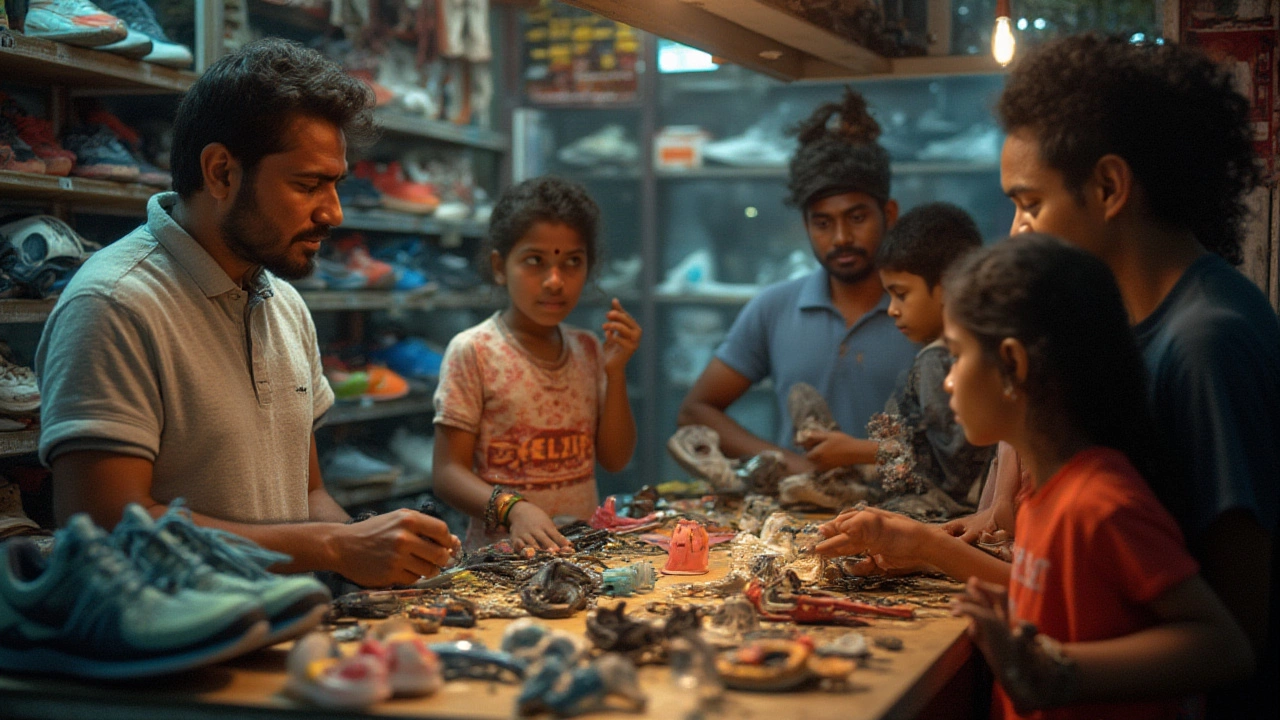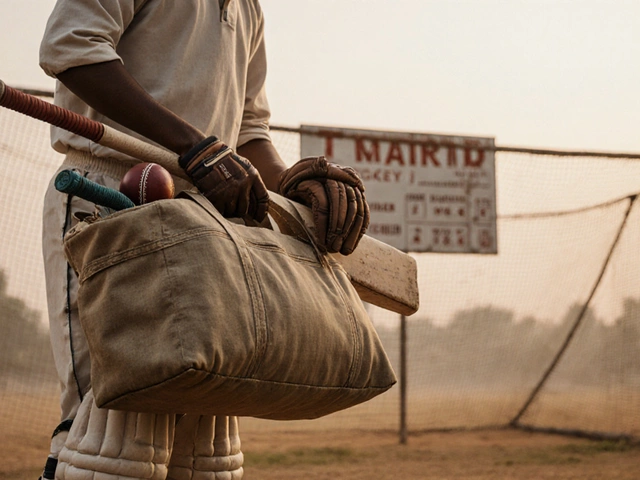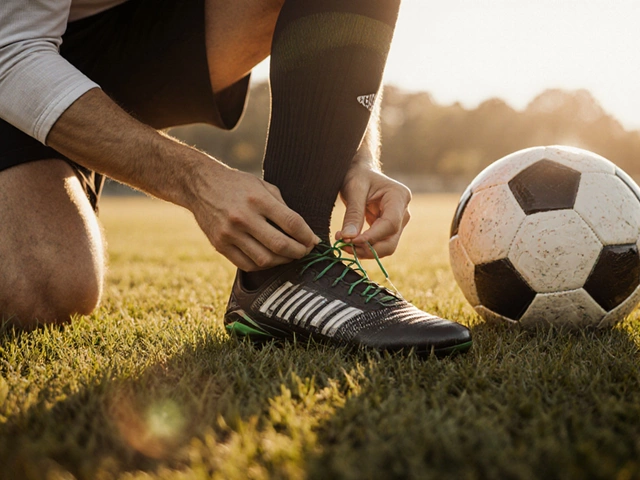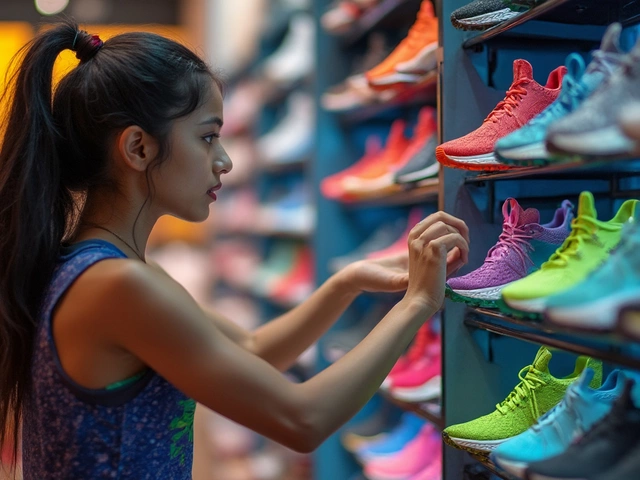Ever watched a cricket match and wondered why batsmen obsess over the balance of their bats, or why runners care about the angle of their spikes? The way sports are played today, it’s impossible to ignore how much equipment can change the game. From custom-made football boots for Messi to Michael Phelps’ high-tech swimsuits, gear is getting more specialized every year. Some might argue that athletes’ skills alone define success, but ask anyone who’s stepped onto a field or court: the right tools don’t just help—they often decide the outcome.
Defining Sports Specific Equipment
If you’ve ever walked into a sports store, you’ve probably felt that rush of seeing endless rows of gear—some familiar, some almost alien. Not all equipment is made equal. "Sports specific equipment" means gear designed for the unique needs of a particular sport. This isn’t about generic running shoes or a plain T-shirt; it’s about cricket bats engineered with the right sweet spot, basketball shoes that cushion lateral moves, or golf clubs tailored for your swing.
You can think of sports specific equipment as everything that helps an athlete perform their best, stay safe, and meet the demands of their sport. Let’s use a real example: In cricket, bats are crafted from English willow or Kashmir willow, each affecting power and control differently. Compare that to tennis, where racquet string tension changes spin and speed. The science of design, uncomfortable as it may sound, is as much a factor as your practice session. A famous study from 2021 (published in the Journal of Sports Engineering) found that athletes who used gear matched specifically to their activity outperformed those with generic options by up to 20% in controlled skills tests.
India, for instance, has seen a massive spike in demand for customized gear. Whether it’s a badminton racket in Hyderabad, a hockey stick in Punjab, or trail running shoes for the rough Sahyadri terrain—knowing what works for your sport offers real results. Take Virat Kohli’s bat: it’s not just wood, it’s carefully weighted and shaped to suit his batting technique. Besides performance, safety plays a huge role. Rugby helmets, mouthguards for boxers, shin guards for footballers—these don’t just improve comfort, they can mean the difference between an epic win and a career-threatening injury.
Customization isn’t just for the pros. With access to tech and data, even amateurs can find options suited to their body type and playing style. That’s why growing numbers of weekend warriors invest in running shoes that support their unique stride or rackets tuned to their arm speed. Trends show that people who use specific equipment are less likely to get injured. A 2023 survey by the Indian Journal of Sports Medicine pointed out a 35% drop in preventable injuries among youth athletes using the right protective gear.
The Science Behind Specialized Sports Gear
Anyone who’s watched Olympic cycling knows just how far science and tech have gone in sports equipment. The world of sports gear is driven by one key idea: make the athlete go faster, hit harder, jump higher, or simply stay safer. It’s not about flashy design, but about biomechanics, physics, and good old human trial and error. Let’s break this down with something relatable—running shoes. The soles aren’t just rubber: they’re layers of EVA foam, carbon plates, and mesh designed to protect joints, maximize grip, and propel you forward with each stride. Nike’s Vaporfly, for example, claimed to shave precious seconds off marathon times by improving energy return; their launch in 2017 sparked debate about "technological doping." The 2019 Berlin Marathon saw 31 of 36 top finishers wearing advanced carbon-plated shoes.
Let’s talk cricket again. Bat design uses computer modeling to map out the perfect balance and sweet spot. Manufacturers test dozens of tiny changes in wood density and handle grip before mass producing a single model. That’s not marketing hype, that’s sports engineering in action. In racket sports, sensors now measure string vibrations so you can tweak tension down to the decimal. Does it sound fancy? It’s often the difference between a smooth rally and early elbow pain.
The science goes beyond performance. In football, shock absorption in helmets is rigorously tested to prevent concussion. Materials for goalkeeper gloves are designed to withstand sub-zero and super-hot pitch temperatures without losing grip. The 2019 Rugby World Cup saw players using GPS-tracked vests to monitor real-time impact levels, alerting coaches to swap out players before injuries occurred.
Swimming is a field where equipment tech almost crossed the line. Remember the Speedo LZR Racer suit from the 2008 Olympics? That suit was so fast—reducing drag and increasing buoyancy—that dozens of world records were smashed. Soon after, the suits were banned because they gave athletes too big an edge. Gear can change sport rules, not just personal bests. Whether you’re hitting a shuttle or pounding the pavement, the right gear blends athletic skill with the latest tech. A table below shows how some sports benefit from specialized tech:
| Sport | Critical Equipment Innovation | Impact on Performance |
|---|---|---|
| Running | Carbon-fiber plates, responsive foams | Up to 4% improved race times |
| Cricket | Weighted bats, shock-absorbing helmets | Better shot control, concussion reduction |
| Swimming | Low-drag swimsuits | Record-breaking speeds |
| Football | Studded boots, curved ball seams | Improved grip, swerve on shots |
| Boxing | Multi-layer gloves, custom mouthguards | Hand/wrist safety, reduced jaw injuries |
Some athletes might still claim: "It’s all about talent and hard work." True—but small edges add up. Ask any pro to give up their lucky racquet or shoes and you’ll see the power of belief mixed with technology.

Choosing the Right Equipment for Your Sport
You don’t need million-rupee sponsorships or Olympic ambitions to care about your gear. Whether you’re kicking a football at Shivaji Park, running Marine Drive in monsoon, or hitting your first six in a local gully match, picking the right equipment matters. Start with a simple question: what does your sport demand? Not all sports require high-tech—table tennis paddles, for example, reward quick footwork and reflexes almost as much as rubber thickness.
Here are a few things to look for:
- Fit and Comfort: Nothing ruins a game faster than shoes that pinch or a helmet that wobbles. Try before you buy, and don’t chase brands for the sake of it.
- Activity Level: Are you training daily or just for Sunday fun? For regular play, invest in slightly better quality—it’ll pay off with fewer injuries and better performance.
- Body Type and Style: Heavier bats may suit power hitters, while lighter ones favor control players. Shoes with arch support help flat-footed runners. Personalized gear isn’t overkill even for intermediates.
- Local Climate: In humid Mumbai, quick-drying clothes and sweat-resistant grips make all the difference. In colder places, thermal layers and gloves matter more.
- Budget: Good gear isn’t always the most expensive. Sometimes last year’s models, or lesser-known brands, offer similar performance at a fraction of the price.
Talk to a coach if you’re not sure—many serious amateurs swear by tester days offered by sports stores, where you can try equipment before you commit. Another tip: check out online reviews from people who play at your level, not just pros. Half the time, amateurs care more about durability and easy upkeep than splitting-second performance. Keep in mind, statistics from Decathlon India in 2024 revealed that customers who received in-store gear fitting advice reported 27% higher satisfaction and 19% fewer equipment-related injuries.
Don’t ignore maintenance. Shoes outlive their bounce, strings lose tension, and cricket pads crack after a few seasons of Mumbai rains. Replace worn items on time—if you don’t, performance will drop quietly until a bad day exposes it. Also, pay attention to safety upgrades. While it’s tempting to ignore shin guards in a friendly match, those few grams of plastic can prevent months of limping.
If you’re starting a new sport, it may not make sense to invest in everything at once. Try renting or borrowing equipment until you figure out what works. There’s no shame in not owning the flashiest kit on the block. What matters is how well your setup supports what you want from the sport—fun, challenge, or the glory of gentle bragging rights among friends.
Trends and Future Innovations in Sports Equipment
The way sports equipment keeps changing, you’d think gear design is its own Olympic event. Gone are the days when a tennis racquet or a pair of spikes looked the same for years. Today, if you blink, you might miss the latest innovation. The past couple of years have particularly sped things up. Microchips, smart sensors, moisture-wicking fabrics, and 3D-printed parts now show up everywhere from local running clubs to the Premier League.
Let’s talk wearables. Fitness trackers and heart rate monitors aren’t just style statements—they’re powerful tools. Smart balls in football now record how hard you kick or curve a shot, sending instant feedback to your phone. Tennis and badminton rackets come with built-in sensors, tracking swing speed and sweet spot consistency. Data like this is turning everyday players into their own coaches, letting you practice smarter rather than just harder.
3D printing is another game changer. Instead of being stuck with one-size-fits-all guards or shoes, you can now scan your feet at home or in-store and have perfectly sized shoes delivered in weeks. The Indian startup sector isn’t far behind: several companies now offer custom cricket grips and stumps made with locally-sourced, sustainable materials. That’s both personal and eco-friendly—a win-win for modern athletes.
The push towards sustainability is also big. People are realizing that old gear often ends up as landfill. This has sparked interest in recyclable tennis balls, biodegradable running shoe soles, and football kits produced from upcycled plastic bottles. According to a 2024 market report from Grand View Research, the sports equipment industry is projected to hit $90 billion globally, with "eco-friendly" lines clocking the fastest growth.
Virtual reality (VR) tools for sports training—imagine cricket batsmen facing AI-powered bowlers from their living room—are quickly gaining popularity. Tech like this, combined with haptic feedback gloves, allows practice without even stepping onto the field. It’s not science fiction, it’s what junior academies and even pro teams in India are starting to use to train safely when monsoon hits and pitches close.
As these innovations enter local markets, they become more affordable and accessible. Soon, picking the right sports specific equipment is going to mean asking: does my gear help me play smarter, safer, and greener? The right equipment already blurs the line between amateur and pro, letting more people get serious about their sport. The lesson is simple—invest a bit of time in choosing wisely, stay updated, and don’t be afraid to experiment. In the end, the right gear lets your skills do the talking, every single time.





